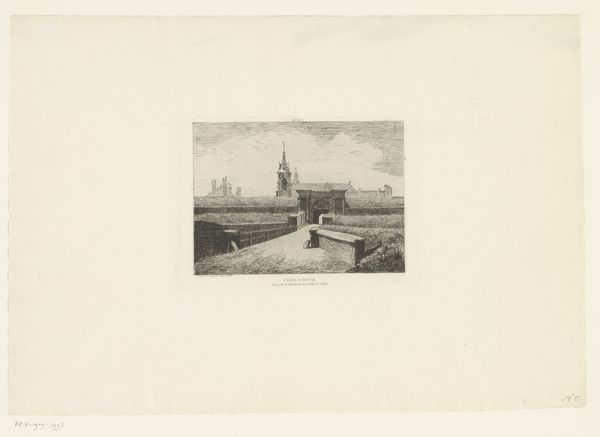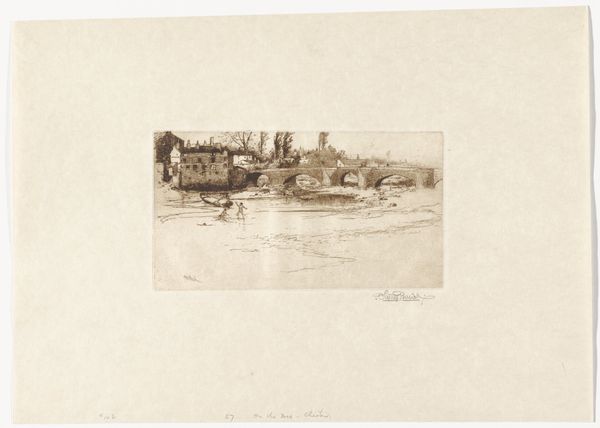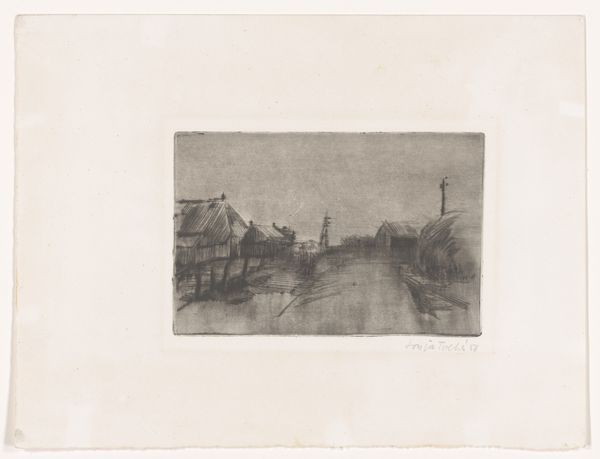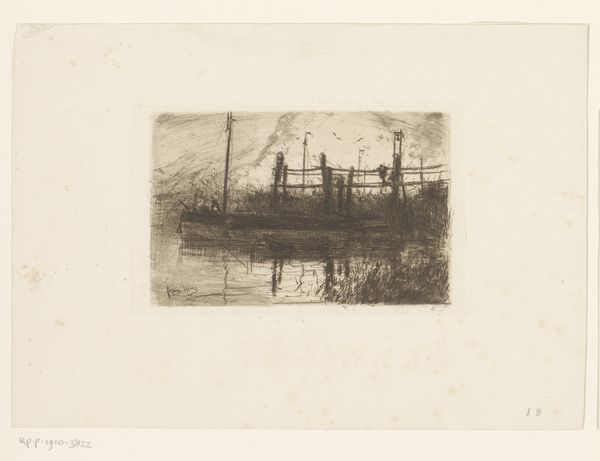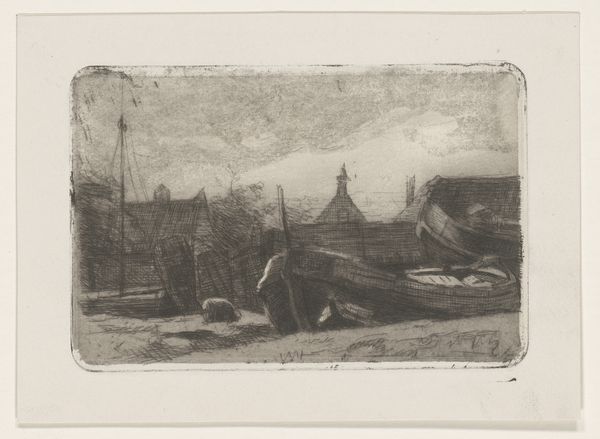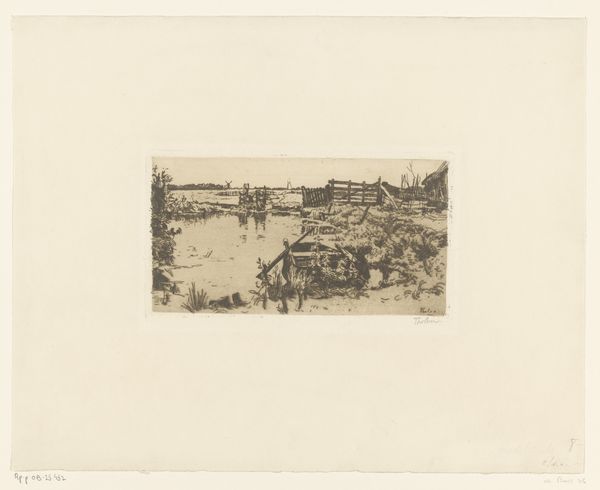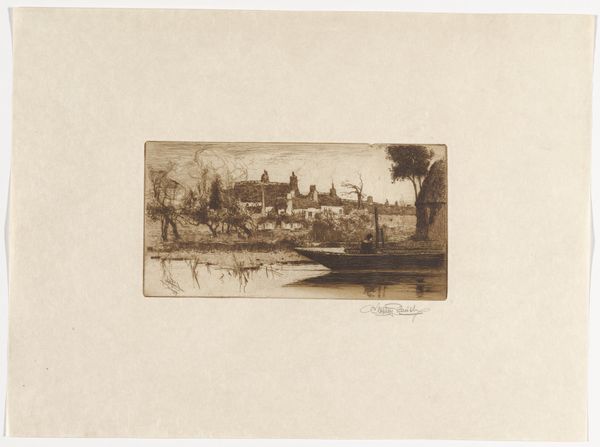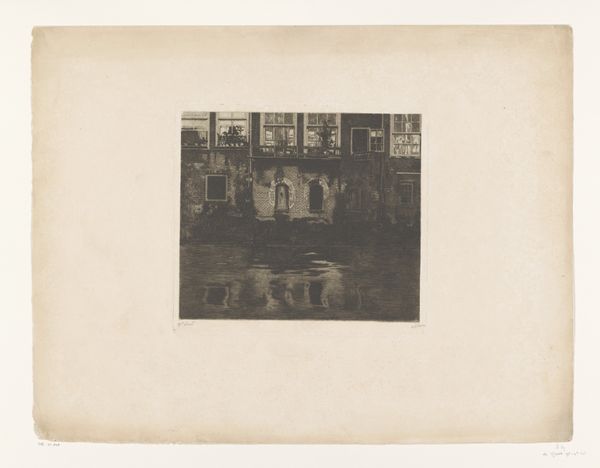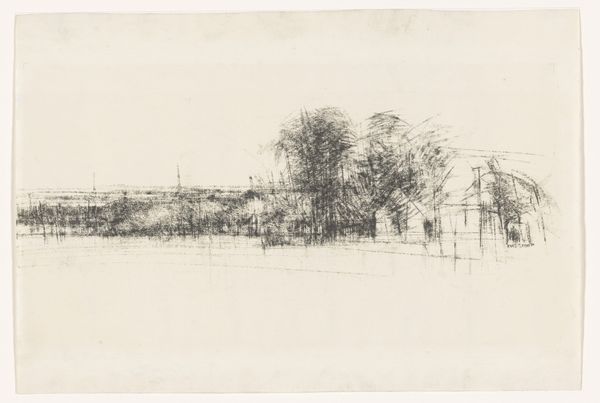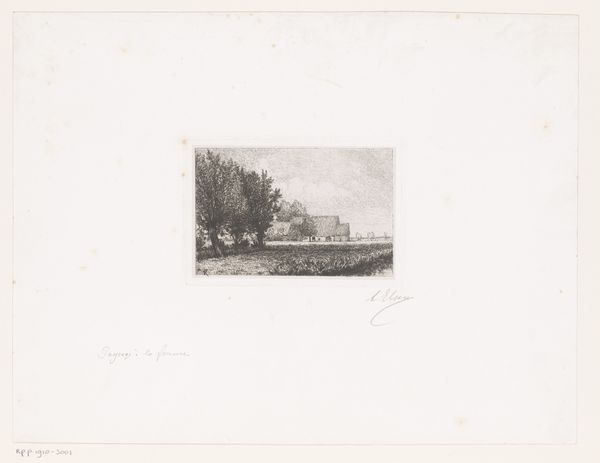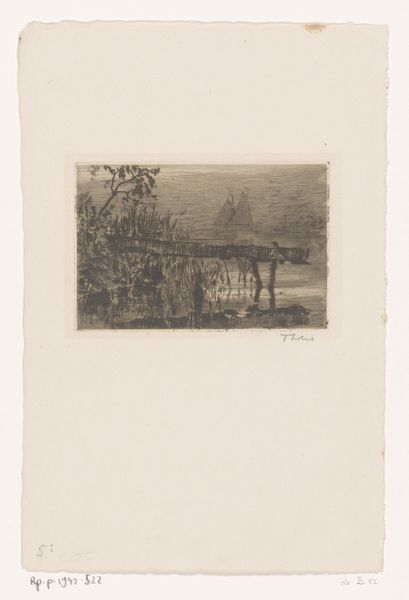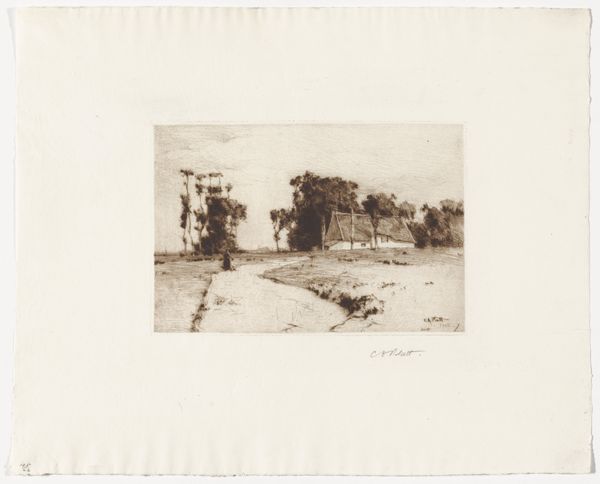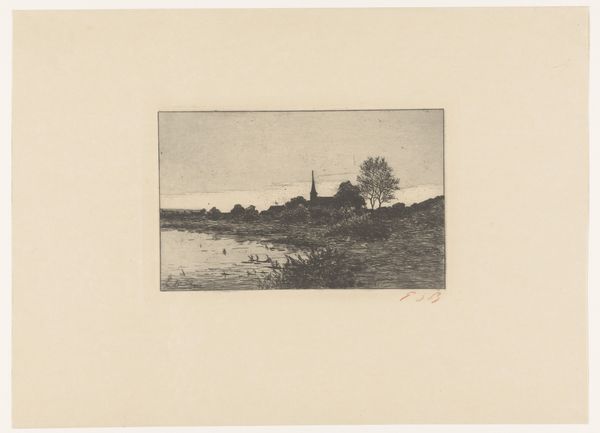
print, etching
#
dutch-golden-age
# print
#
etching
#
landscape
#
realism
Dimensions: height 139 mm, width 197 mm
Copyright: Rijks Museum: Open Domain
Editor: Here we have Paul Mathey’s etching, “Landscape with a Windmill on the Water, possibly Marken,” created sometime between 1854 and 1921. It's so delicate and quiet. I'm struck by how much detail he gets with such fine lines. What do you make of it? Curator: Well, seen through a historical lens, it invites questions about the romanticizing of rural labor. Windmills, essential for draining land and powering industries, are often depicted as quaint, picturesque elements rather than symbols of strenuous work and engineered landscape. Who does that narrative serve, and whose stories are silenced by this depiction? Editor: That's interesting, I hadn’t thought of it that way. Are you saying it's potentially... political? Curator: Everything is potentially political! Consider how landscape imagery, particularly of rural scenes, has historically been used to construct national identity and project specific values. How might an image like this contribute to an idealized vision of Dutch life? And conversely, what is absent from the image? We see no indication of the social changes occurring in Europe at the time. Editor: So, the beauty of the scene is almost like a... distraction? Curator: Perhaps. Or rather, a carefully constructed narrative that encourages a specific interpretation, downplaying the realities of the time. It highlights the artist’s own choices about what to include and, more importantly, what to omit from the picture. Editor: That gives me a lot to think about. It’s more complex than I initially thought. Curator: Precisely! It's not just a pretty picture. It’s a reflection, conscious or not, of social values and power dynamics. The visual elements are always underpinned by complex socioeconomic contexts. Editor: I see the work in a totally different light. Thank you.
Comments
No comments
Be the first to comment and join the conversation on the ultimate creative platform.
